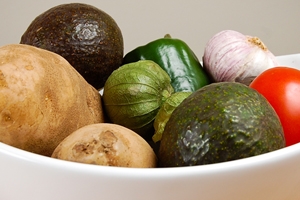Research
High Cost of Fruits, Vegetables Linked to Higher Body Fat in Young Children

High prices for fresh fruits and vegetables are associated with higher Body Mass Index (BMI) in young children in low- and middle-income households, according to American University researchers in the journal Pediatrics.
“There is a small, but significant, association between the prices of fruit and vegetables and higher child BMI,” said Taryn Morrissey, the study’s lead author and assistant professor of public administration and policy at AU’s School of Public Affairs (SPA).
Morrissey said that when the prices of fruits and vegetables go up, families may buy less of them and substitute cheaper foods that may not be as healthy and have more calories.
“These associations are driven by changes in the prices of fresh fruits and vegetables rather than frozen or canned,” said Alison Jacknowitz, a co-author of the study and an associate professor of public administration and policy at SPA.
BMI is a reliable indicator of total body fat, which is related to the risk of life-threatening diseases. More than 26 percent of 2- to 5-year-old children nationwide were considered overweight, defined as having a BMI above the 85th percentile, in 2009 and 2010, up from 21 percent a decade earlier.
The researchers linked data from the Early Childhood Longitudinal Study-Birth Cohort, a nationally representative study of children from infancy to age 5, to local food price data from the Council for Community and Economic Research (C2ER) Cost-of-Living Index. The study focused on households under 300 percent of the federal poverty line, or a family of four earning $70,650 in 2013.
“These associations are driven by changes in the prices of fresh fruits and vegetables rather than frozen or canned."
-Alison Jacknowitz
While, in general, food prices have trended downward in recent decades, particularly the prices of snacks and sugar-sweetened beverages, the real prices of restaurant meals and fruits and vegetables have increased. Fruit and vegetable prices increased by 17 percent between 1997 and 2003 alone. Children living in areas with higher-priced fruits and vegetables averaged higher measures of BMI scores compared with their peers in areas with lower-priced fruits and vegetables.
Another surprising finding was an association between higher fast food prices and an increase in obesity. Morrissey said local fast food outlets may have more freedom than grocery stores to increase their prices in response to higher demand for their products.
The study also identified a small association between higher-priced soft drinks and a lower likelihood of obesity among young children. The study did not find strong associations between food prices and food insecurity, meaning families forced by a lack of money to skip meals, cut portions or otherwise forgo food at some point.
The other co-author of the article, “Local Food Prices and Their Associations with Children’s Weight and Food Security,” is SPA doctoral student Katie Vinopal. The article can be found at http://pediatrics.aappublications.org/content/early/2014/02/04/peds.2013-1963.abstract (subscription required).